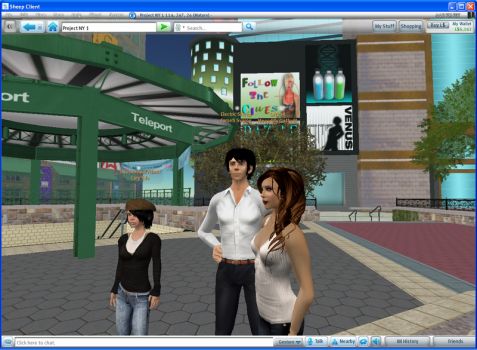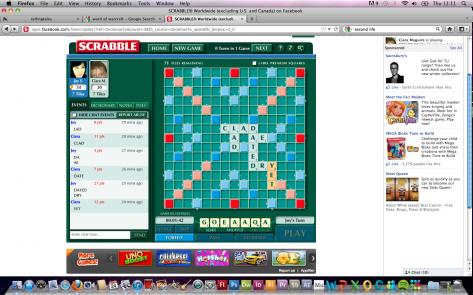Stories and Games
DIGITAL INTERACTION!!!
Back to THEORY
INTERACTION is not INTERPRETATION, its INTERVENTION!!
INTERACTION
Conversation, talking, learning- Interaction is a fundamental element of humanity. So, interaction had and still has a meaning before having a digital life. This meaning, gives humanity to computors! Interactivity is all about CHOICE. In the perfective, the choice has been removed as the story has already been told. Even if it is retold, changed or adapted it is still fundamentally gone! In the imperfective you can still moukd and shape what happens. It can still be changed as its still happening!
Digital Media can give us a temporal position where we are constintly at the beginning of something!
GAMES
Games are like stories except they also have rules and boundaries. Play is a creative activity and participation is essential.
Games are completely in the moment and therefore interactive. The game isnt anything until is played and the outcome changes depending on play. There are winners and losers. We learn through play. We learn how to progress by the way we relate to the information we gather whilst playing. (Reward and Punishment)
STORIES
Narrative is as old as language and is embedded in our human cultures so deep its part of the structure of our universe.
A story is always Perfecive because it is being told. Its happened.
STORY = CONTENT + TEXT + FABULA
Content is all the elements eg people, characters etc
Text is the narrative and the connected events
Fabula is the sequence of actions and how theyre told.
Runescape is an example of a free online game. IT is an non linear, imperfective game.
Its a MMORGP (Massively multiplayer online role-playing game) which is part of a genre of role-playing video games in which a very large number of players interact with one another within a virtual game world.
The aim and goal of playing, is the progression of the players character.
Experience points are awarded for completeing challenges, some of which are not achievable without help from other characters.

Second Life is again a Massively Multiplayer Online game where players interact with each other in a virtual world. Every player hs an avatar of themselves. The 'game' is what it says it is- a virtual second life.There is a finacial system where resident can buy and sell property, there is government embassies, religion, education etc. This game has no end. Progression is just like life; ambitions, talent, education, relationships, finance, and power. Again, it is completely interactive, and non linear. The relationship between author and audience is simple. The author created the virtual platform but the audience owns it and has made it was it is now. It was only because of the number of players that made it able to be as big as what it is. The audience developed it. Its user driven and audience created.Inatially it was criticised because of lack of accessability but since has become open source and these issues have been tackled. eg a modification was made so that visually impared players could navigate the world better.

Scrabble is an traditional game which can be played through facebook. It is still non linear as the game unfolds as it as played, the word, scores, players could be different every time it is played. The author/ audience relationship is different to the other game examples because the rules and structure of the game is designed by the author. There is not as much freedom.
There are three clear trends in the current design of digital books. They seem to stick more or less to a page metaphor borrowed from print eg, turning the page, often its a read along audiobook experience that’s mapped to the page and any audience participation is within the illustrations eg colouring in, pressing buttons, or when something is clicked it opens a secondary piece of narrative, animation etc.
On the left is an example of a childrens e book called Bartleby’s Book of Buttons Vol. 2. The reader participates in the story of tis book by turning and pressing buttons, and navigating pathways. This is a linear design and is perfective because the end has been predetermined by the author. Its not quite interactive as its not free and the audience participates instead of create.
And below, a youtube video showing the illustrations animated in another e book.
GAMES
STORIES
Hypercomics offers the spectator participation through a choice of multiple storylines, each giving different perspectives on the same character, place or event.
Jason Shiga is experimenting with graphic narratives in his own style of minicomics. With complex systems of tabs and “story tubes,” Shiga blurs the line between comics, mazes and pop-up books. He tries to create an idea of motion, time and reader response.